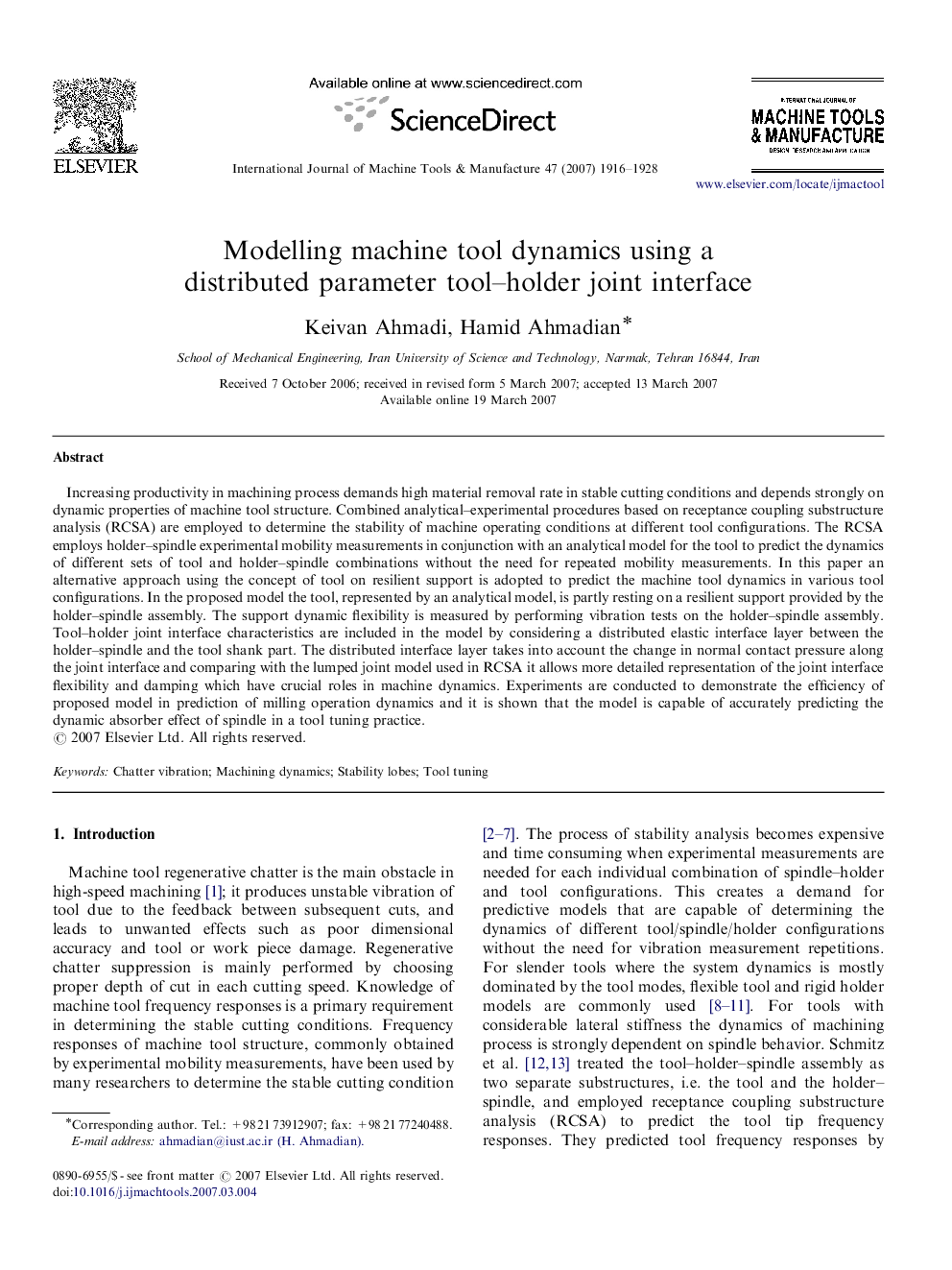| Article ID | Journal | Published Year | Pages | File Type |
|---|---|---|---|---|
| 779046 | International Journal of Machine Tools and Manufacture | 2007 | 13 Pages |
Increasing productivity in machining process demands high material removal rate in stable cutting conditions and depends strongly on dynamic properties of machine tool structure. Combined analytical–experimental procedures based on receptance coupling substructure analysis (RCSA) are employed to determine the stability of machine operating conditions at different tool configurations. The RCSA employs holder–spindle experimental mobility measurements in conjunction with an analytical model for the tool to predict the dynamics of different sets of tool and holder–spindle combinations without the need for repeated mobility measurements. In this paper an alternative approach using the concept of tool on resilient support is adopted to predict the machine tool dynamics in various tool configurations. In the proposed model the tool, represented by an analytical model, is partly resting on a resilient support provided by the holder–spindle assembly. The support dynamic flexibility is measured by performing vibration tests on the holder–spindle assembly. Tool–holder joint interface characteristics are included in the model by considering a distributed elastic interface layer between the holder–spindle and the tool shank part. The distributed interface layer takes into account the change in normal contact pressure along the joint interface and comparing with the lumped joint model used in RCSA it allows more detailed representation of the joint interface flexibility and damping which have crucial roles in machine dynamics. Experiments are conducted to demonstrate the efficiency of proposed model in prediction of milling operation dynamics and it is shown that the model is capable of accurately predicting the dynamic absorber effect of spindle in a tool tuning practice.
